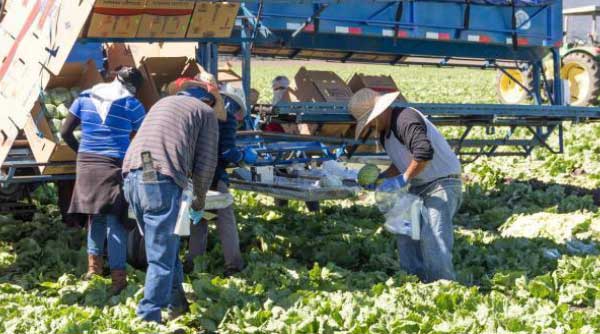
IN recent discussions, we have referred to the review of our economy by the CDB and the Bank’s conclusion that, if we undertook the necessary fiscal reforms then the future for St. Lucia looks bright.
The Bank provides the sober advice that we have to do better at managing our fiscal affairs, and that first means that we have to stop spending more than we earn. We need also to generate sufficient savings so that we can manage our debt burden, and then we need to invest in transformative infrastructure projects. That’s the old-fashioned way: work hard, don’t spend more than you earn, and invest in infrastructural projects which will spur growth in the economy.
The CDB Review does not however suggest that our economy is in crisis, or that desperate measures are required to rescue it, and the recommendations which the Bank makes in its Review enable the country to bring its Debt to GDP ratio back to the recommended 60% over the next 15 years. We have serious economic problems which require prudent management, but nothing more.
Our debt service is however a major concern, as, with our debt rising from EC$2.1bn at the end of 2011 to EC$2.9bn at the end of 2015, our principal repayments are projected to move from EC$93m in 2011/12 to EC$123m in 2016/17, and our interest payments rise from EC$103m to EC$170m over the same period. The CDB Review also addresses this, pointing to the need to restructure our debt repayments.
Recently also we’ve had a discussion on the topic of Foreign Direct Investment and the low levels that we have been experiencing over the last several years. In the face of claims some months ago that the projects proposed under the Citizenship by Investment Programme were an indication that investor confidence had returned to St. Lucia, we pointed out that there was nothing to support those claims as our economy remained weak and there was therefore no reason for this increased confidence. What the country had in fact been doing was camouflaging a weak and unsustainable economy with inducements to external prospectors through the CIP.
But we need Foreign Direct Investment, as this injects fresh money into our economy and allows us to grow. What we don’t want with those investments however is for them to come all at once, as that is a recipe for chaos. It’s not hard to arrive at a picture of that as we have a fixed number of employable persons, and demand will quickly exceed the number of available persons possessing university education. On the construction side, high demand will rapidly exceed the number of skilled tradesmen available, exceed the capacity of our equipment and transportation sectors, and severely strain our infrastructure.
When either or both of these happen, demand exceeding labour or equipment availability, the incoming FDI flows straight back out as inputs for the investment have to be imported. With FDI, what we want is not a heavy downpour, but a slow, steady shower of investment. What then is the value of that steady shower of investment that we would most benefit from? We don’t know and we hope that our economists will lend a hand, but in the meantime we can speculate.
One of the aspects of construction that we hear about regularly is that it has a high multiplier effect in the economy. What this means is that for every $1 invested in construction, some multiple of that is generated in economic activity. That data is regularly measured and reported, and so for New Zealand, a 2011 PricewaterhouseCoopers report on the construction industry there puts that multiple at 3. For the United Kingdom, a 2013 report prepared for the United Kingdom Construction Group puts the construction multiplier for that country at 2.84.

Fortunately for us, the impacts of investment in both construction and agriculture on the economy of Jamaica have been studied, and while the conditions and results may not be identical to ours, we can use them as a guide. The report on that study, issued in 2010 but based on 2008 data, is entitled “Responding to Crisis with Investment: The Short-Term Employment and Economic Growth Effects of Construction Sector Investments in Jamaica”, and was prepared by staff of the International Bank for Reconstruction and Development, IBRD, an arm of the World Bank. The report includes a caution on the accuracy of the employment data available, but it is a sufficient guide to the impacts of these two sectors.
According to this report, the multiplier effect of both construction and agriculture in Jamaica in 2008 was 1.6. This means that for every US$1m of investment in either the construction or agriculture sectors, US$1.6m of growth was generated across the economy.
The report also provides insight on the impact of these two sectors on short-term employment, indicating that for construction, a US$1m investment is associated with the creation of 81 short-term jobs; for agriculture, every US$1m investment is associated with the creation of 205 short-term jobs. So, we have a starting point as, leaving the issue of economic growth to the economists, we can begin with a look at employment.
According to the 2015 Economic Review of St. Lucia’s economy, 24,500 persons were unemployed during that year. If we consider the construction sector and use the data from the IBRD report, we would need investment of about US$300m should we seek to employ all of those 24,500 persons through investment in construction. This sets the upper limit for annual new investment in construction.
If we give the same consideration to agriculture, then with 205 jobs being created with investment of US$1m, about US$120m or EC$330m is required to create full employment in any one year. Except that for agriculture, we can expect a substantial number of those jobs to become long-term employment, and that means that the level of subsequent annual investment required would be much lower.
If we speculate further and suggest that half of our unemployed population would gain employment by investment in construction in any one year, then the question which faces our technocrats is determination of the level of investment needed to generate sustainable additional employment in agriculture for about 12,000 persons. That data may or may not be available for St. Lucia, but if it is not, then conducting field trials in order to obtain it would be experiments worth our while.
With the experience of Jamaica indicating that the multiplier effect is the same for both agriculture and construction, 1.6, it should not matter to the economy where the investment takes place as we experiment with agriculture. And if we commit to establishment of those 12,000 jobs in agriculture, then the maximum that we can absorb in construction in any given year would now become US$150m, or EC$400m.
Remember, the data is not perfect, and we are assuming that Jamaica’s experience can be applied to St. Lucia. But even then, provided we re-establish agriculture, investment in construction of EC$400m annually would create full employment. Full employment is an optimistic goal and so investment of even half of that amount would make a huge additional dent in our unemployment numbers.
Investment in agriculture is particularly attractive however, as it can be done in stages and the investment strategy can be continuously tailored by the experience gained over the preceding years. There is a concern though that somehow, our labour force sees construction as a more acceptable avenue for employment than agriculture, and increased construction activity tends to draw labour away from agriculture. This faulty perception of the status of agriculture will also have to be addressed.
We’ve presented the above as a preliminary discussion on the level of investment that our country can probably absorb in any given year. If we place the necessary emphasis on agriculture, then for construction, that level of investment is about EC$200m annually. Invest much more than that and the investment flows straight back out to its original source, leaving us with little benefit. If also we place too much emphasis on construction, then we starve the agricultural sector of labor.
More importantly though, when persons speak of stimulating the economy, they generally first think of construction as the vehicle for achieving that end. If the Jamaican data is anything to go by however, then investment in agriculture may be an even better option, as in addition to generating employment, Jamaica managed to cut its food importation bill by US$44m over the period 2013- 2014.
There is a tried and tested path to economic and social development, and economic recovery is not beyond us. Our social development however is an entirely different matter.













David,
You have not addressed one very important point in your Utopian idyll: the law of diminishing returns.
Given our extremely limited usable landmass, how quickly will the law of diminishing returns manifest itself after foreign investment in construction & agriculture?
David,
You use the term “old-fashioned” in this opinion piece, and I immediately translate that to “reactionary”!
What should be the single most important initiative immediately embarked upon in St. Lucia, with or without foreign investment?
Mr. Prescod, I won’t rank this among your better pieces. I found it to be hard to follow and too full of assumptions and conjecture.
To begin with, it’s highly unlikely the multiplier effect from construction and/or agriculture in Saint Lucia will be anywhere near that of Jamaica. The backward and forward linkages between agriculture and tourism in Jamaica for example are much stronger than in Saint Lucia, as Jamaica has a larger tourism plant which can more readily absorb the additional food that is produced. Moreover, Jamaica’s labour force is far more mature and more skilled than Saint Lucia’s
The foreign exchange leakage in both agriculture and construction in Saint Lucia is quite high, as apart from labour, practically all other inputs are imported – such as fertilizer, herbicides, pesticides, in the case of agriculture; and cement, steel, and nails in the case of agriculture.
One of the factors that may be missing from the analysis of the multiplier effect in Jamaica is the conversion of temporary jobs in construction into permanent jobs in other sectors such as tourism. Over the last decade, several large hotels have been built in Jamaica which in turn has led to more full-time jobs in the land-based tourism.
It’s unlikely Saint Lucia will experience a flood at foreign direct investment at the same time. A more critical concern of mine is the creation of long-term jobs.
The Patriot
Thank you for your comments.
You make the points better than I did that our unemployed labour force is largely poorly educated and unskilled, and that the linkages between agriculture and tourism need to be strengthened.
In 2012, our food import bill was reported as being EC$350m annually. Last month the FAO reported the region’s annual food import bill as being US$4bn annually, with this projected to rise to between US$8bn and US$10bn annually by 2020. There is an assured market for increased local production.
My concern, as yours, is the creation of long-term jobs, and the effort was to point out that in this regard, agriculture is the more effective vehicle. Unfortunately, some data was required to avoid the very conjecture which you mention. The article however recognizes that the Jamaican data may not be applicable locally, and suggests that we should be conducting similar research.
CIP threatens that flood of FDI with the US$2bn project proposed for Vieux-Fort in addition to CIP hotel investments at Vieux-Fort and Choiseul. We must be concerned with the impact which this will have on agricultural development, the creation of long-term jobs, and the types of jobs being created.
Agriculture has too long been neglected.
David
I can not believe, you wrote that crap. What about the negative multiplier effect in the construction industry? Asked RK about it, where he brings in all foreign technical crew.
But since the voice wants to control views and expressions. I will stop here.
Mr. Prescod,
To me, the rate of absorption of investment is not a big deal. I say this for the following reasons: (1) Government has little control over the timing of investment. Once Government has given the go-ahead for a project, it cannot ask a developer to delay that project because of absorption issues. Investors will not sit on money on which they’re paying high rates of interest. There’s a cost involved. I think economists refer to this as the time value of money. Moreover, investors want to enjoy returns on their investment sooner rather than later. (2) while I share your concerns about the sheer size of the DSH project, I believe it’s unlikely the project will pose absorption issues. As I understand it, the developers don’t have all of the money to launch into a full-scale development right away and so a phased approach is likely.
None of this should not be taken as a defense of the DSH project.
A lot has been said and written about the importance of agriculture. But clearly, a mere recognition of the importance of the sector has not been enough. As we know, domestic investment in the sector declined with the demise of bananas. The sector has not been made a priority for foreign direct investment in the same way as say, tourism. Few young people are going into farming, even of the subsistence type. Restoring the market for bananas is one thing. Securing a price for bananas that is high enough to entice farmers to return to their fields in quite another.
We need to be very clear about the type of agriculture the country might pursue, bearing in mind issues such as market access, susceptibility to disease and extreme weather, transportation costs, and theft.